Considered one of the most beautiful cities in Northern Portugal, Viana do Castelo is a city seen by some international magazines as the “the crown jewel of Costa Verde”, which is the same to say, a stoppage point in the country’s northern coastline.
As a small town and due to its strategic location beside Lima river, Viana do Castelo was originally named as Viana da Foz do Lima (literally Viana of Lima river mouth). As the town grew along with its importance as a trading post, especially with Northern-European countries, the town was elevated to the category of city in 1848 and, with that, adopted its current name.
About the name Viana do Castelo, legend has it that there was a big castle and people liked to stare at it, admiring its beauty until some of them noticed that a princess used to sit by the window.
Disclosure: This post may contain affiliate links, meaning i get a commission if you decide to make a purchase through my links, at no cost to you. Please read my disclosure for more info.
She was a beautiful girl, with bright eyes and long hair with two braids. The princess didn’t like to be seen and so she hid herself every time someone was looking at the castle and, because of that, it was a “privilege” to gaze at the princess. Whenever someone saw her, they’d say “Eu vi Ana no Castelo!” (literally “I saw Ana of the castle!”). Legend has it that this is how the name of the city first appeared.
The historic centre stands out because of its avenues and narrow streets flanked by Manueline and Rococo-style houses and palaces.
The proximity to the river and the sea offers great conditions for nautical sports and, apart from that, the city is also known as the capital of Portuguese folklore and handicrafts, with special emphasis to the beautiful embroideries and ceramics.
Located 75 km north of Porto and 55 km northwest of Braga, Viana do Castelo is, today, a wonderful city with beautiful monuments, great gastronomy, popular and religious festivities and much more!
In this article, I’ll show you the 20 places you can’t miss during your visit to Viana do Castelo, the itinerary so that you won’t lose too much time from one place to another, where to sleep, where to eat, the festivities and important tips so that you can fully enjoy your stay in the city.
Before reading my suggestions, please watch my video about Viana do Castelo. In this video you’ll have the opportunity to see the most beautiful places as well as a magnificent sunset!
Top 20 things to do in Viana do Castelo:
Sommaire
- Top 20 things to do in Viana do Castelo:
- 1. Museu de Artes Decorativas
- 2. Igreja de São Domingos
- 3. Capela de Nossa Senhora da Agonia
- 4. Forte de Santiago da Barra
- 5. Navio-Hospital Gil Eannes
- 6. Casa dos Nichos
- 7. Sé Catedral
- 8. Praça da República
- 9. Museu do Traje
- 10. Palácio dos Távoras
- 11. Santuário de Santa Luzia
- 12. Citânia de Santa Luzia
- 13. Praia Norte
- 14. Carreço
- 15. Afife
- 16. Cascata do Pincho
- 17. Santuário da Nossa Senhora do Minho
- 18. Capela de São Silvestre
- 19. Praia do Cabedelo
- 20 – Miradouro da Nossa Senhora dos Emigrantes (Castelo do Neiva)
- Itinerary to visit the 20 most beautiful places in Viana do Castelo
- Where yo sleep in Viana do Castelo
- Where to eat in Viana do Castelo
- Traditions and Festivities in Viana do Castelo
1. Museu de Artes Decorativas
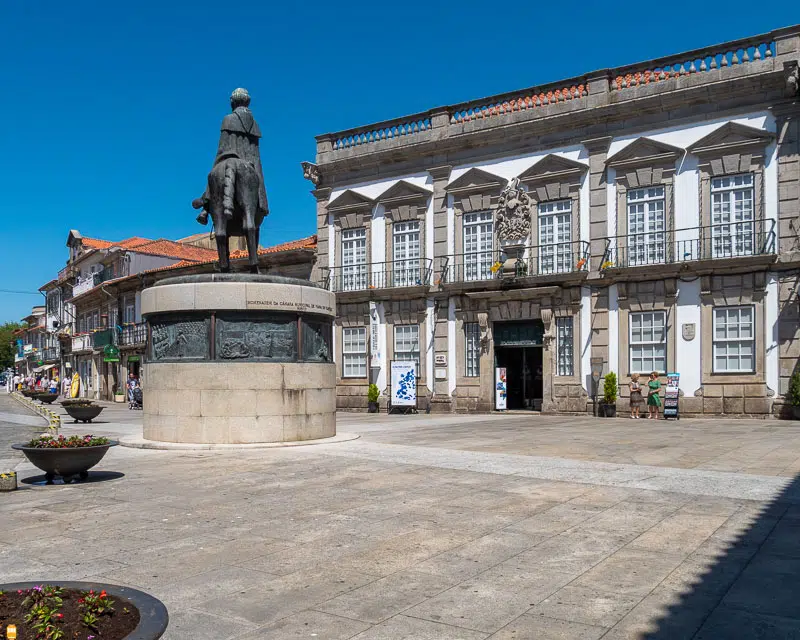
The Museum of Decorative Arts is a city museum and here you’ll find the most complete and richest collection of Portuguese ceramics, with around 1600 pieces.
This museum’s main objectives are the conservation and promotion of its collections and the story inherent to each piece. In that regard, know that, apart from the collection of Portuguese ceramics, you can also admire the wonderful collections of furniture, sculpture, painting and numismatics.
2. Igreja de São Domingos
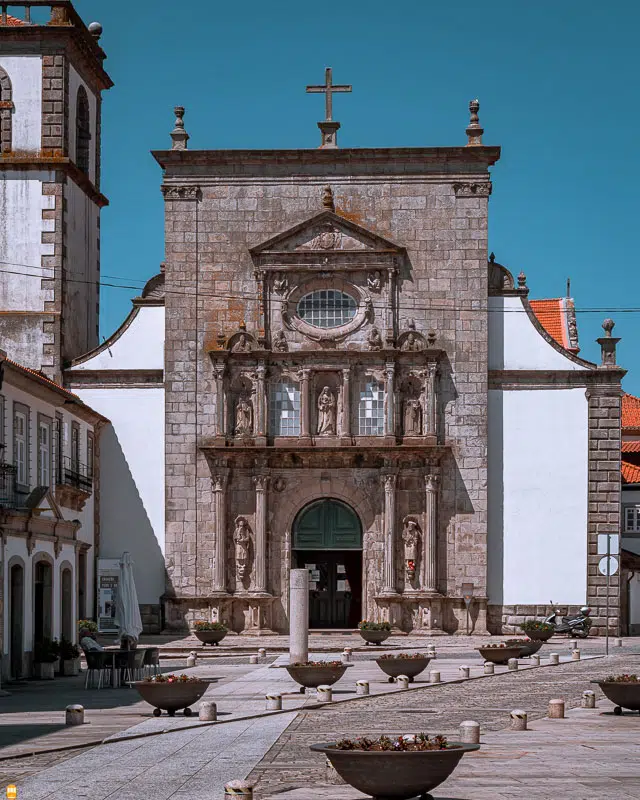
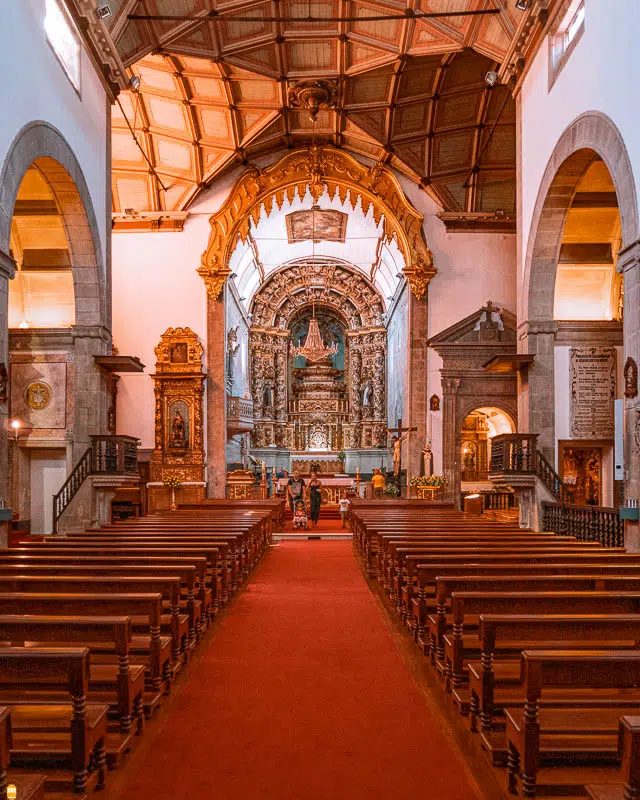
Built during the second half of the 16th century, the Convent of São Domingos Church is classified as a Portuguese national monument since 1910 and it is one of the religious buildings you can’t miss during your visit to Viana do Castelo.
The first highlight of this church is its magnificent facade, unique in the city and similar to the one you can admire in the Convent of São Gonçalo Church, in Amarante.
Inside the church, it is possible to admire several altars in gilded wood and the big altarpiece in the northern part of the cross, sculpted by José Álvares Araújo.
3. Capela de Nossa Senhora da Agonia
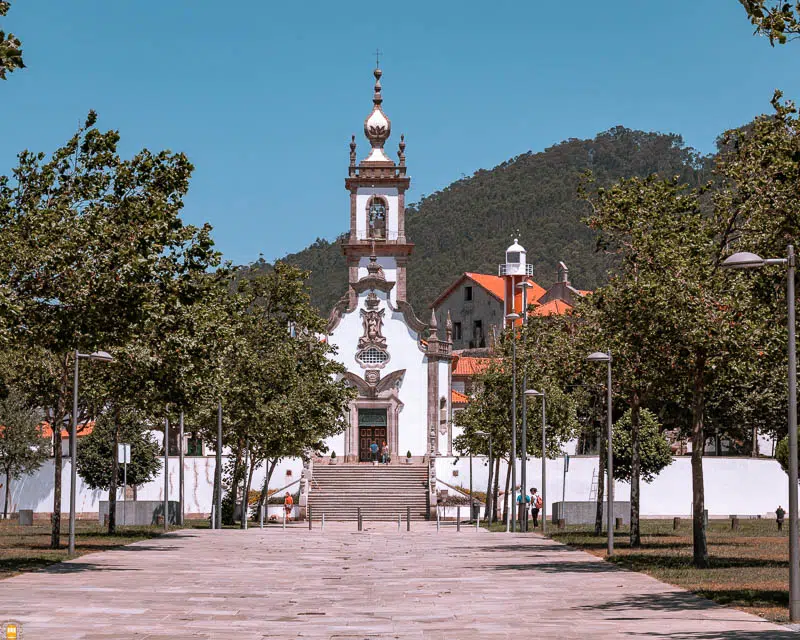
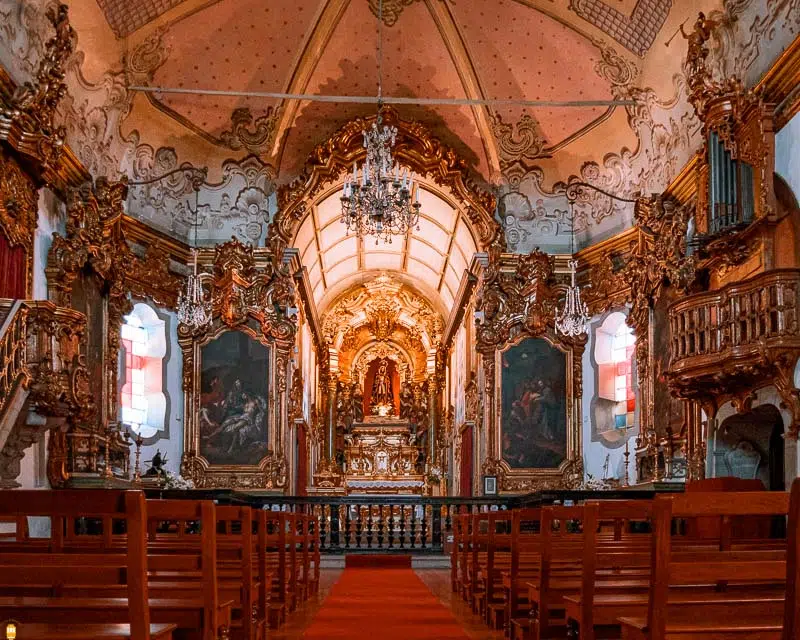
The Chapel of Nossa Senhora da Agonia was erected in the mid-1700’s and it is today another beautiful religious building in Viana do Castelo.
You’ll easily notice some influences of the Portuguese-baroque style, like the altarpieces, among which the cenotaph of the Passion of Christ, made by André Soares. The tower, dating back to 1868, was built separated from the chapel, which isn’t very common in the Portuguese churches and chapels.
Information: the exterior of the chapel is basic but don’t hesitate to go inside – you’ll be amazed with its beauty!
4. Forte de Santiago da Barra

The Fort of Santiago da Barra was built in the 16th century, a construction that ended during the reign of D. Sebastião but with unique traits from Manueline-style architecture.
Throughout the years, the fort underwent several improvement works during the time Portugal was under the rule of D. Filipe II of Spain (D. Filipe I of Portugal), that commissioned the present polygonal fortress.
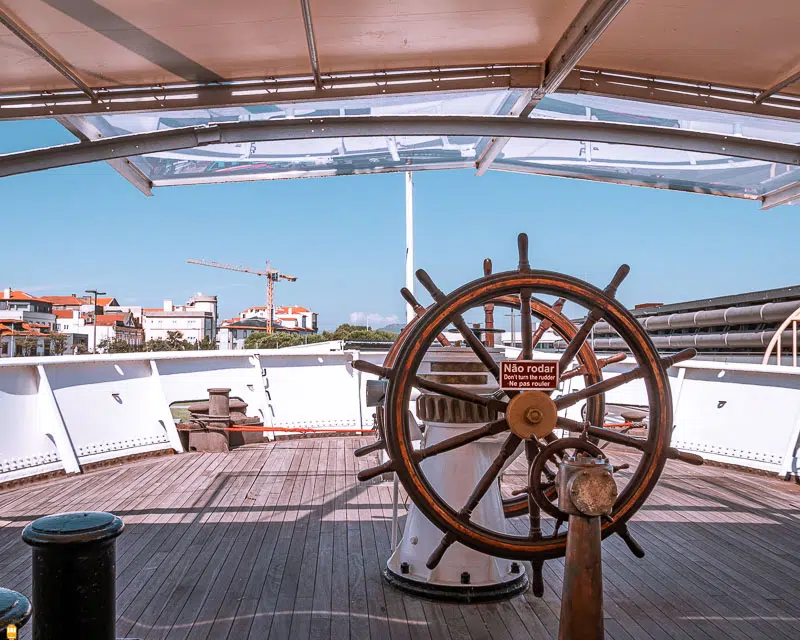
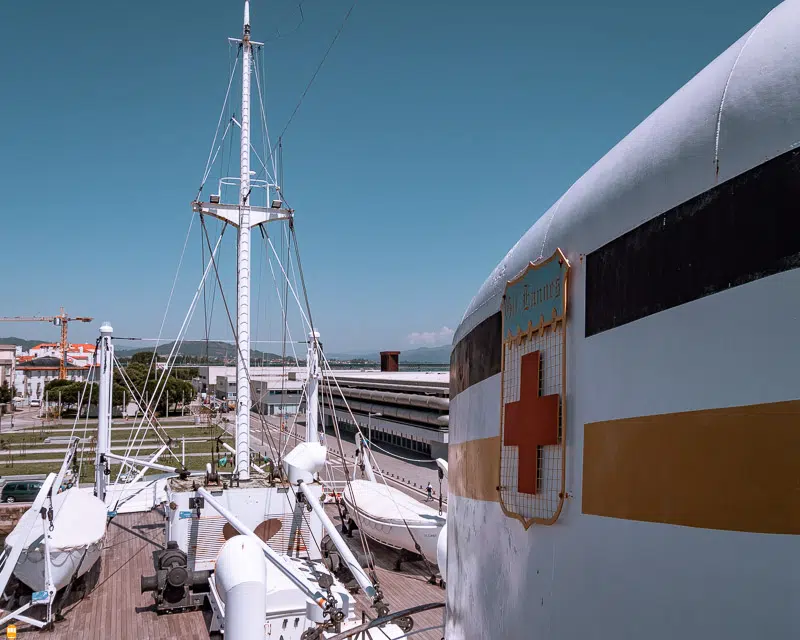
The hospital ship Gil Eannes, built in 1955, supported the Portuguese fishing fleet for decades close to the coast of Newfoundland and Greenland.
The transformation of this ship into a museum offered the possibility for visitors to experience something unforgettable and unique. Nowadays, it is a tourism reference in Viana do Castelo, having been visited, since its inauguration in 1998, by close to 400 000 people.
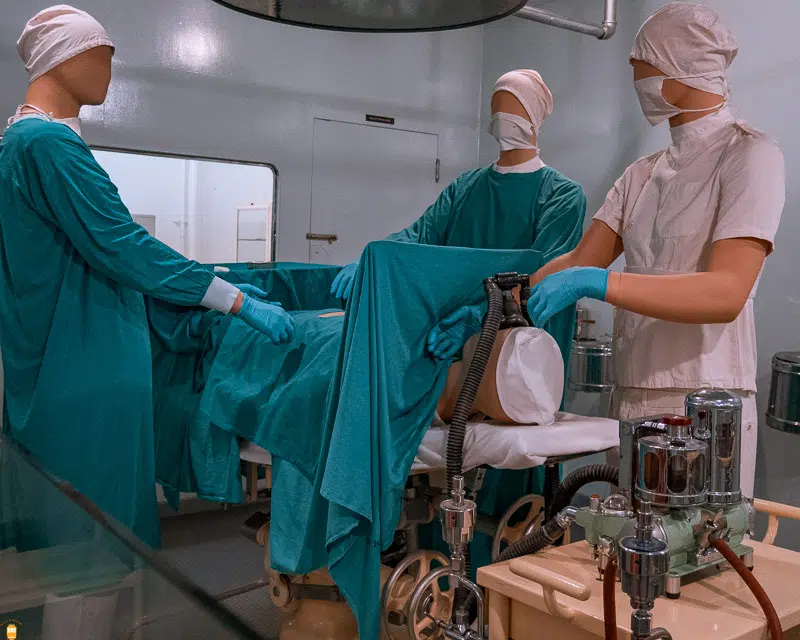
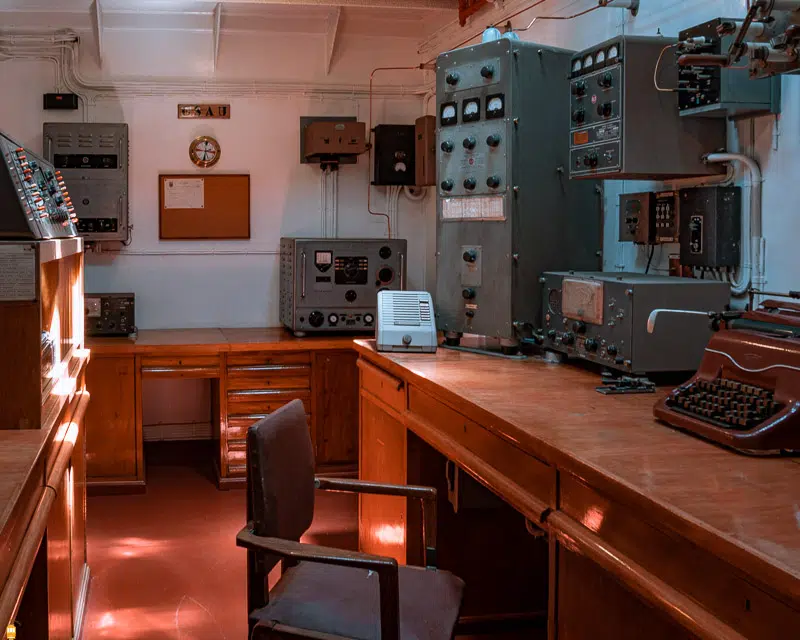

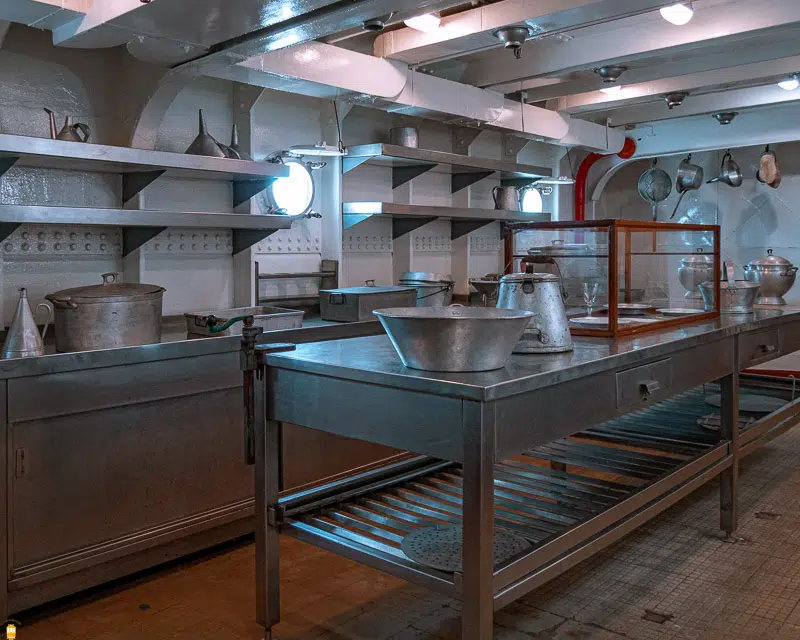
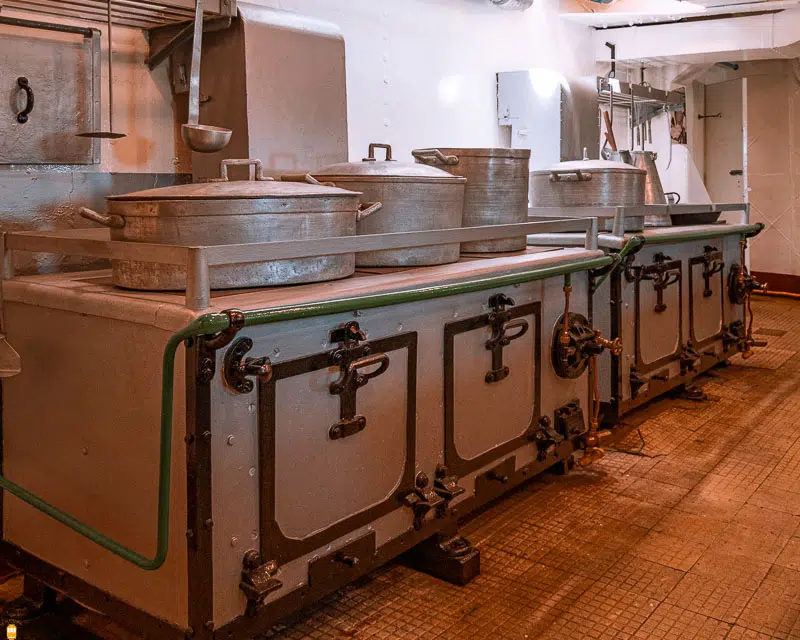
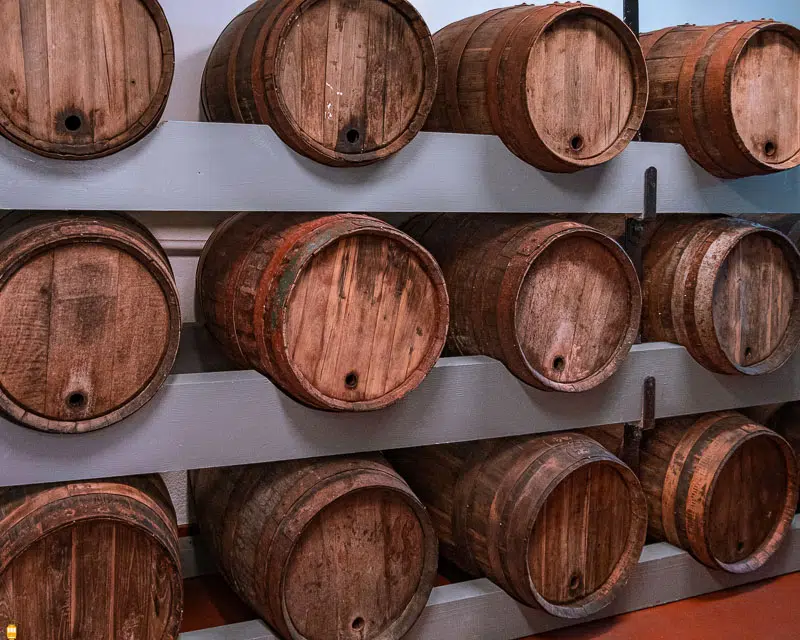
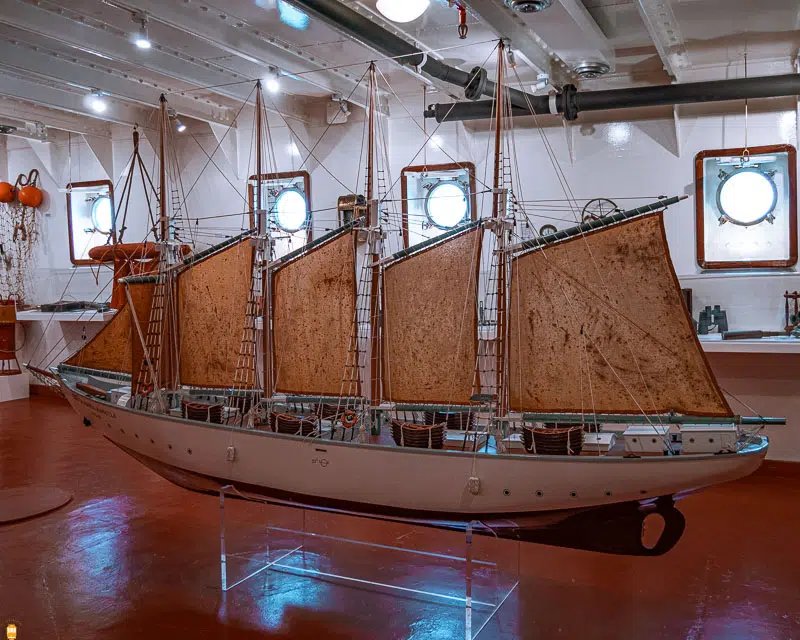
Information: before leaving the ship, watch the video in the conference room to see how the Portuguese caught codfish and the trials the fishermen had to go through to bring this loved fish to the tables.
6. Casa dos Nichos
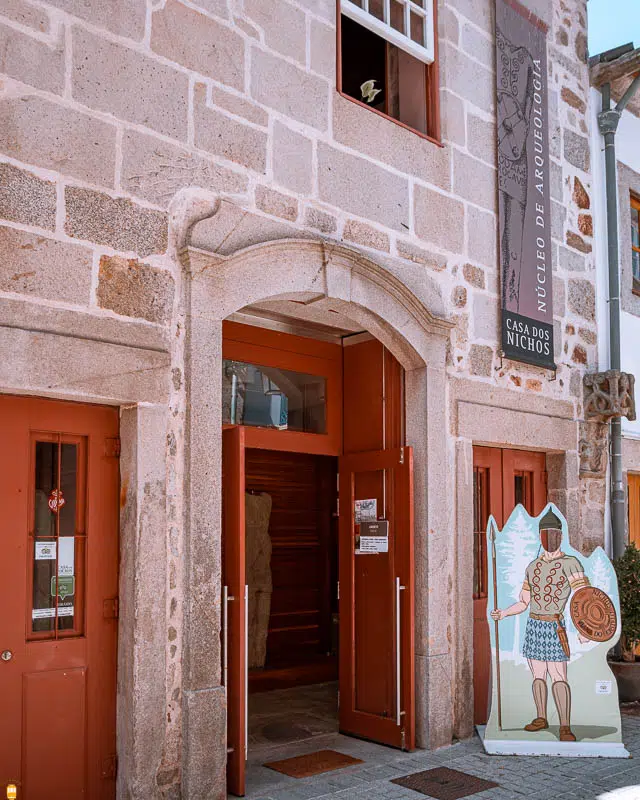
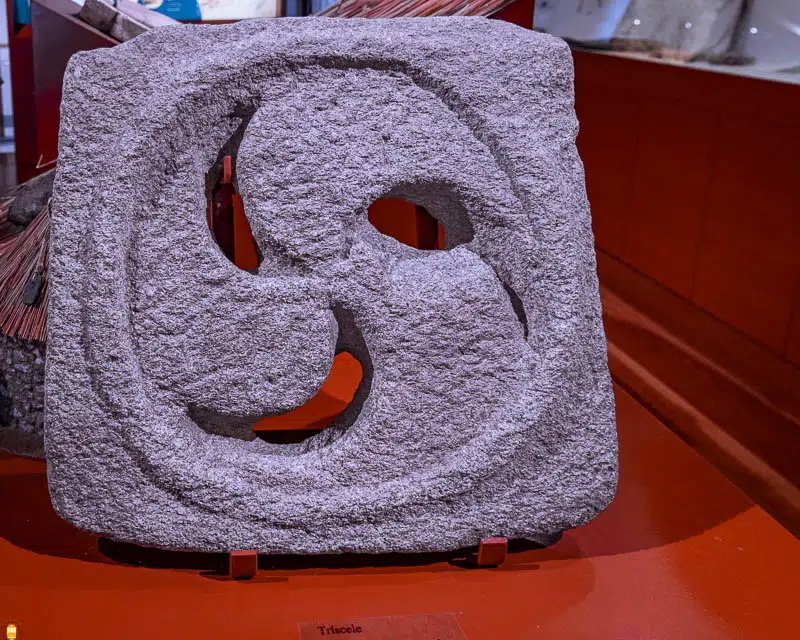
Casa dos Nichos was built in the 15th century and renovated more recently to become a museum where part of the archaeological collection of Viana do Castelo is displayed. In this building you can admire pieces from the Prehistory, Iron Age and Roman periods.
Information: before visiting Casa dos Nichos, don’t miss the opportunity to go to Café Zé Natário, well-known for its bolas de Berlim (Berliner pastry)!
7. Sé Catedral
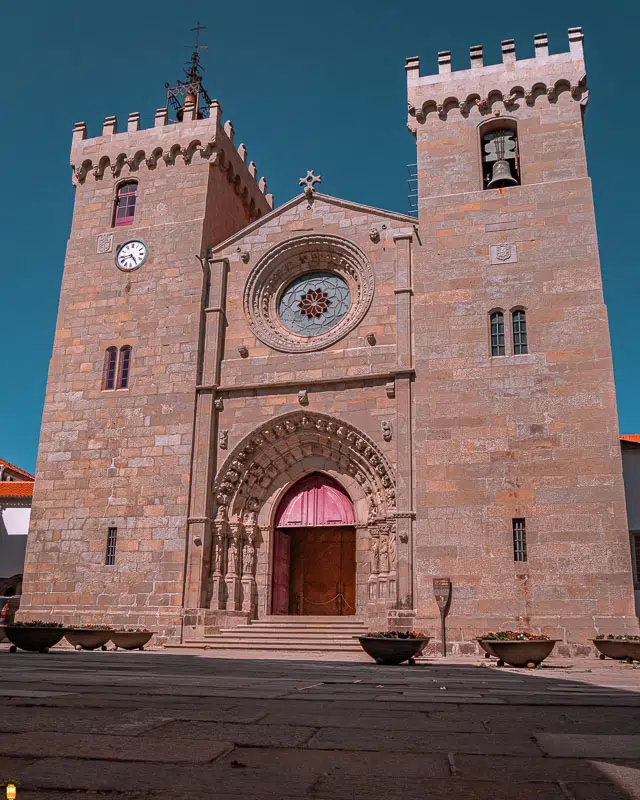
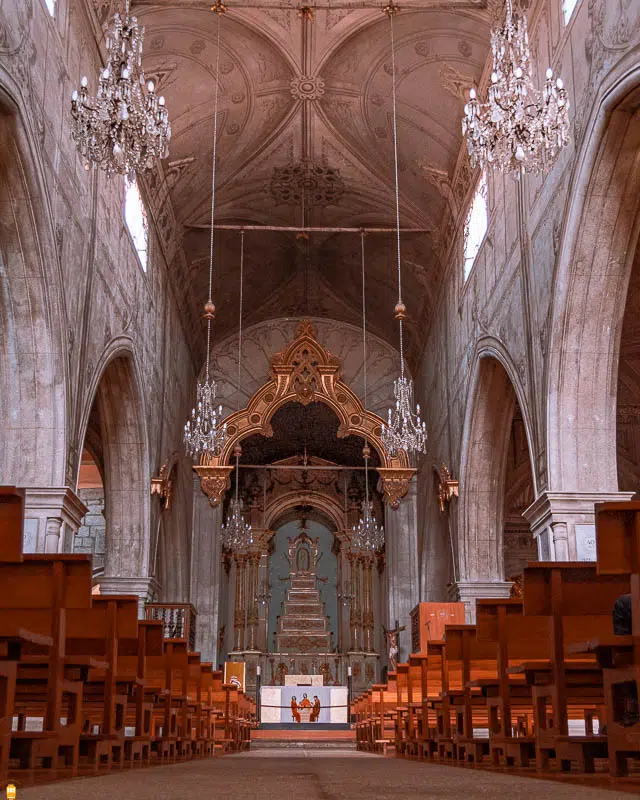
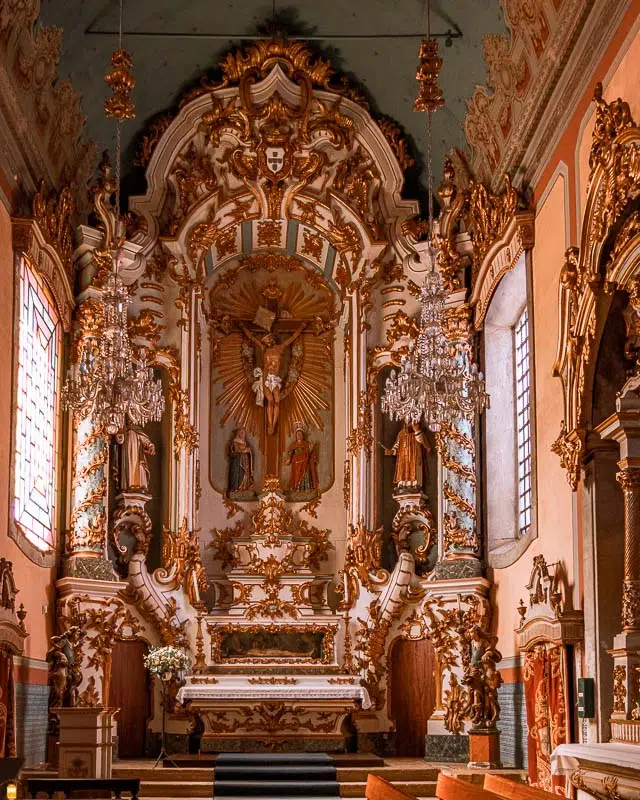
The construction of the main church of Viana do Castelo dates back to the 15th century and has some influences from the Gothic period. In November 1977, Pope Paul VI authorised the constitution of Viana do Castelo diocese, elevating the old church to the category of Cathedral.
While heading to this point of interest, don’t forget to go to the garden Jardim da Marginal to admire the statue Estátua de Viana and the Eiffel Bridge, created by Gustave Eiffel’s company and directed by the engineers João Matos and Boaventura Vieira. Its inauguration took place in the 30th June 1978.

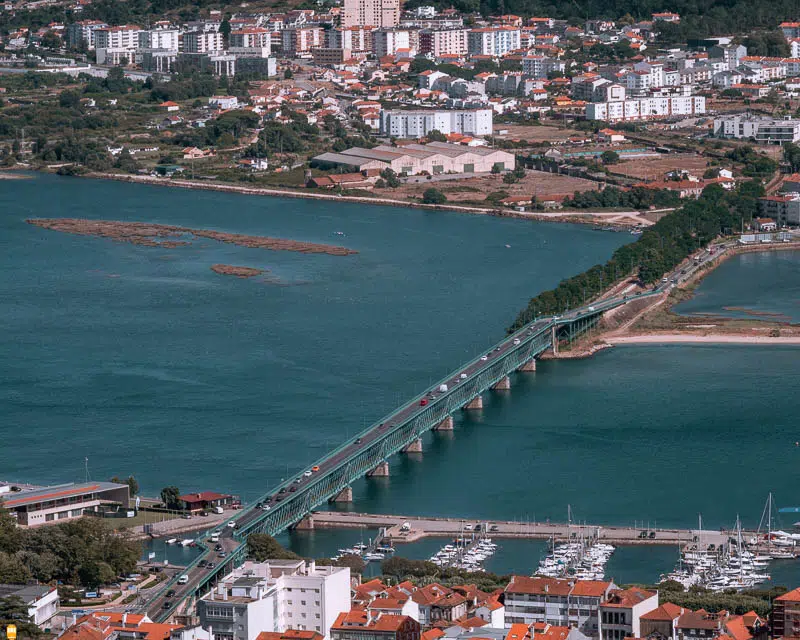
Don’t miss the opportunity to admire the house Casa dos Costa Barros, built in the 16th century and property of the same family since 1765. Stop at the street Rua de São Pedro to contemplate the beautiful facade with an architectural style that pays tribute to the Portuguese discoveries.
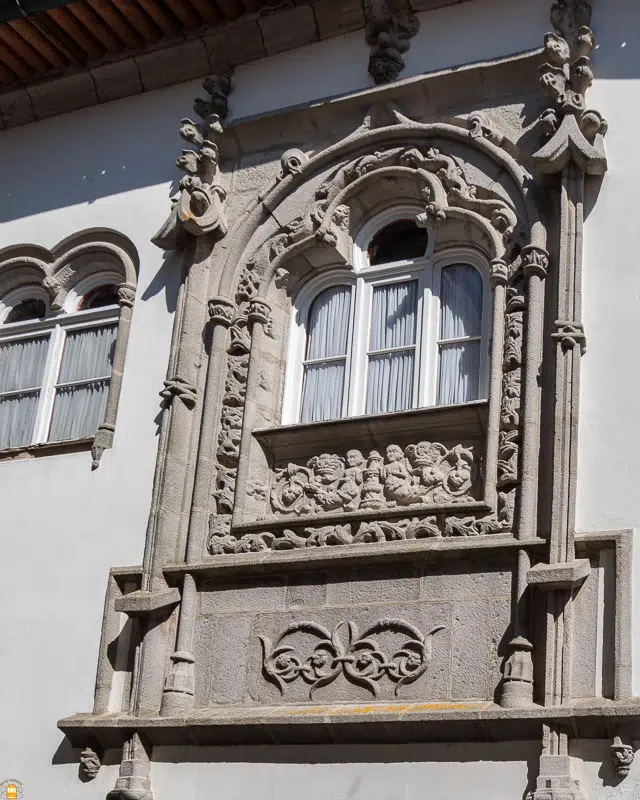
8. Praça da República

Considered one of the main points of interest in Viana do Castelo, the square Praça da República is the perfect location for commerce and leisure. Here, you’ll have the opportunity to admire three Portuguese national monuments: the fountain (Chafariz), the old Town Hall building (Antigos Paços do Concelho) and the building Edifício da Misericórdia, all of them built during the 16th century.
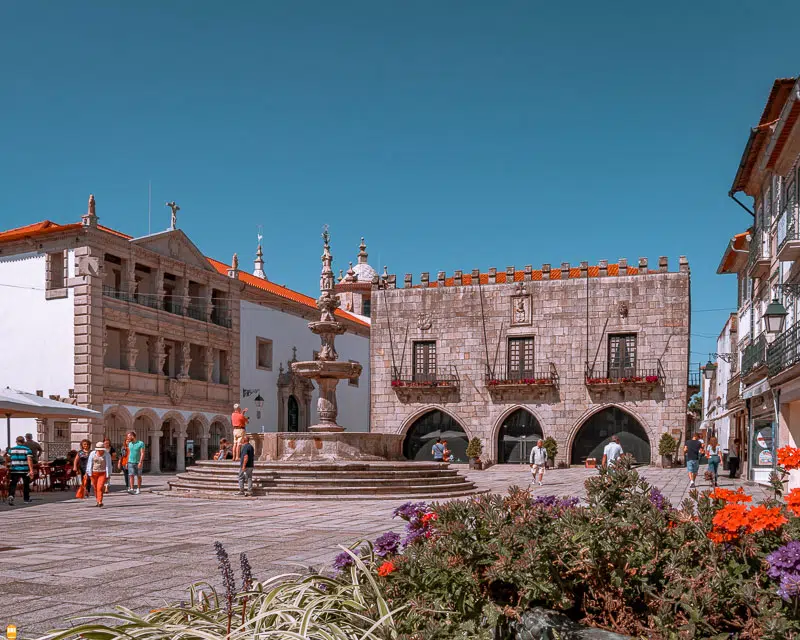
If you have the chance, visit the church Igreja da Misericórdia to admire the beautiful glazed-tile panels you’ll find there.
9. Museu do Traje

Located in the historic centre, the old building of Banco de Portugal welcomes since 2004 the Costume Museum which displays the richness of traditional costumes from Viana do Castelo through several exhibits of ethnography and clothes from Viana.
Information: behind this museum, you’ll find Pastelaria e Confeitaria Manuel Natário, well-known for its pastry, especially Berliners, considered the best in the city and in the country! Don’t miss the opportunity to try this delicacy when you visit the city.
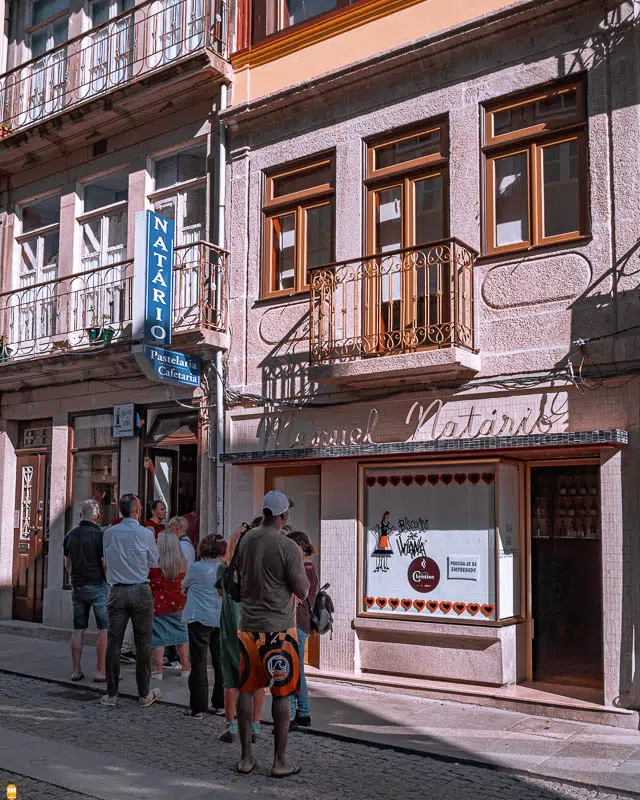

Personal opinion: during my visit to Viana do Castelo, I savoured both the Berliners from Confeitaria Manuel Natário and Café Zé Natário, located a few metres away, and despite the Berliner from Manuel Natário being more famous, the truth is that I consider the one from Café Zé Natário more delicious!
10. Palácio dos Távoras
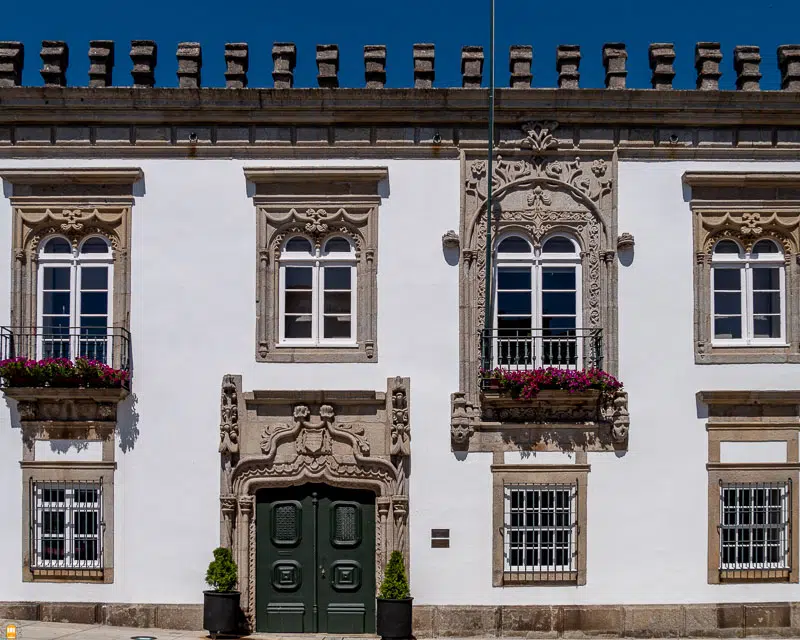
Located in the street Passeio das Mordomas da Romaria, this 16th-century palace is one of the most beautiful in the city and was built by Fernando Brandão who wanted to make it the residence for Abreu Távora.
Years later, the palace was renovated by the architect Manuel Pinto Villalobos, more precisely in the 18th century. In the second half of the 19th century, the building was bought by the City Hall to use it for its municipal services.
Information: you can’t visit the interior, but it’s still worth stopping in front of the building to admire the Manueline doors.
11. Santuário de Santa Luzia
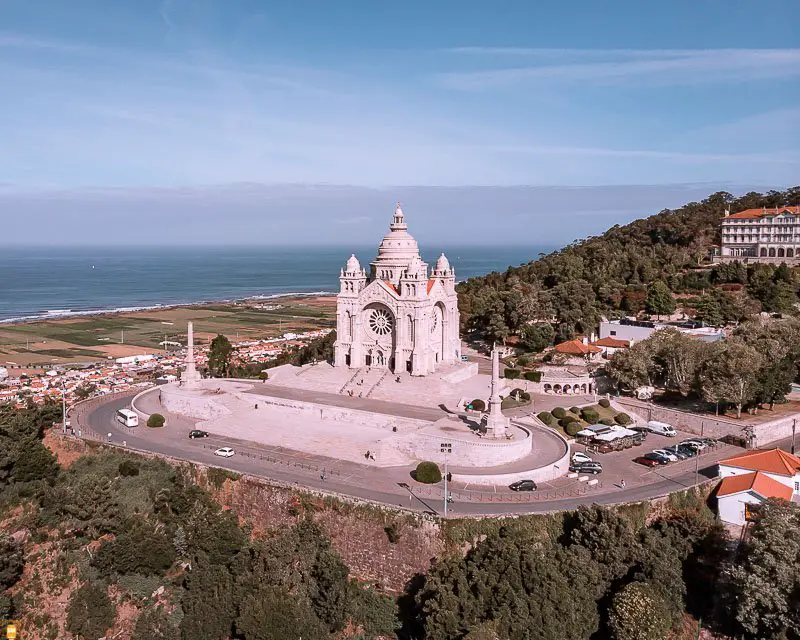
The Temple of the Sacred Heart of Jesus, built in the westernmost point of mount Monte de Santa Luzia is, definitely, one of the most famous and emblematic monuments in Portugal.
This temple is an excellent example of Neo-Gothic and Neo-Romanesque architecture. The construction of this sanctuary in the highest part of Monte de Santa Luzia began in 1904 and finished in 1959 and was commissioned by the confraternity Confraria de Santa Luzia.

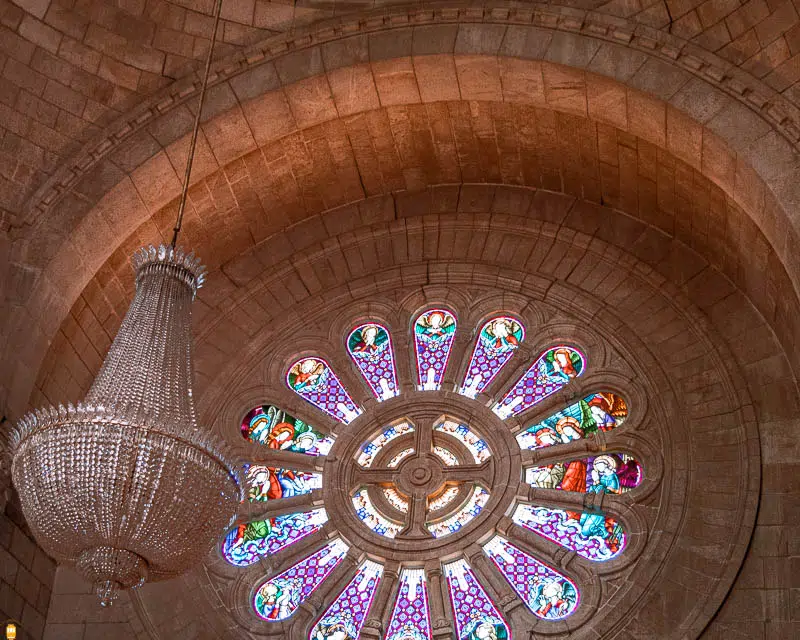
In June 2014, an amphitheatre was inaugurated in the garden Jardim das Tílias. Four years later, a building was inaugurated in the same place and there you can visit a museum and even spend the night.
To get to the Sanctuary of Santa Luzia, you can choose the car, climb the long stairway or take the funicular of Santa Luzia with space for 24 people. The route is 650 metres long and has a gradient of 160 metres and the trip takes about six to seven minutes.
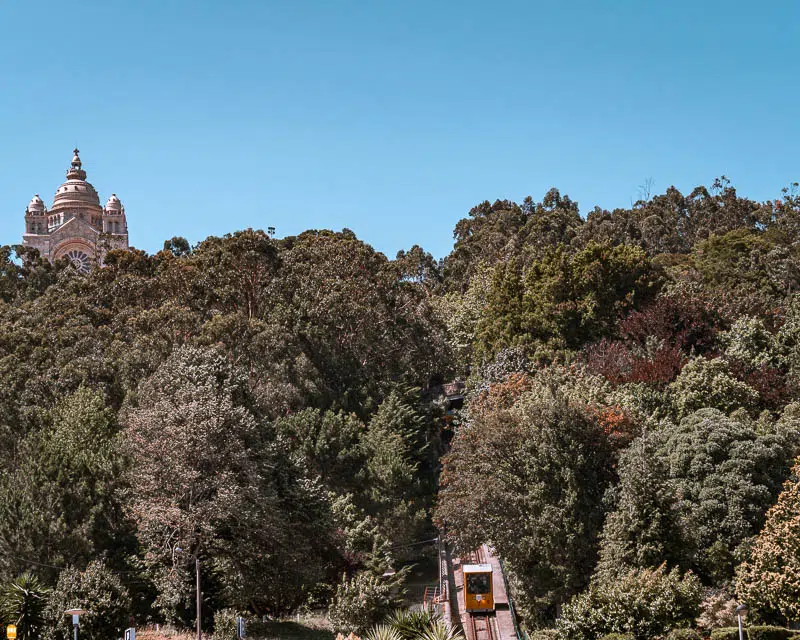
12. Citânia de Santa Luzia
The old fortified village of Santa Luzia, also known as the “old town”, is one of the most famous in Portugal and one of the most important for the study of the Romanisation of this Portuguese region.

The strategic location of this place was fundamental to dominate big seacoast areas and, at the same time, control the movement of ships in Lima river mouth, that would be navigable centuries ago.
13. Praia Norte
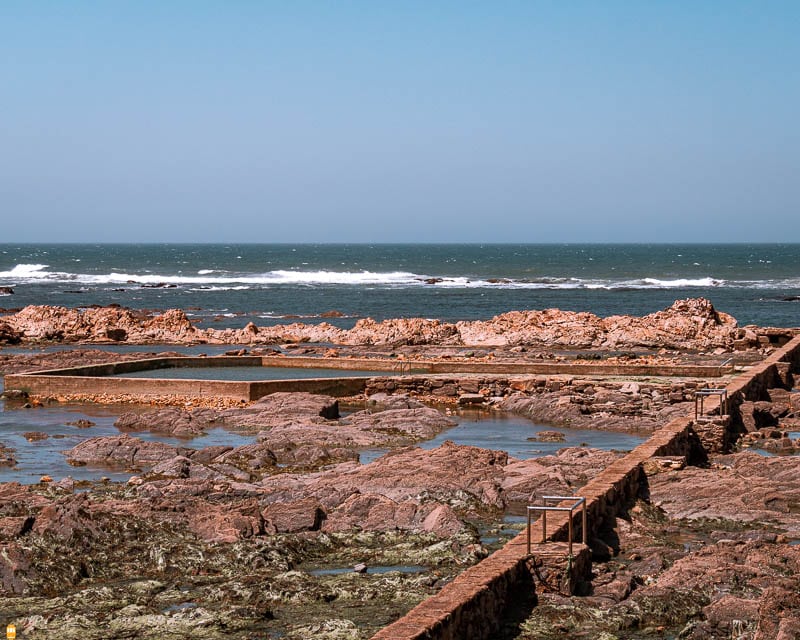
The beach Praia Norte is a place of great beauty where you’ll find salt water natural pools, built as a way to get around the major issue of this area – rocks.
Despite its small beach area, you should know that there is a first aid post nearby as well as some cafes that offer panoramic views.
Don’t hesitate to go for a walk along the beach until you get to the fort Forte da Areosa to admire the beauty of this place. For those who like hiking or cycling, know that a part of the eco path Ecovia Litoral crosses this location from the city of Esposende to Caminha, a path that spans for 73 km.
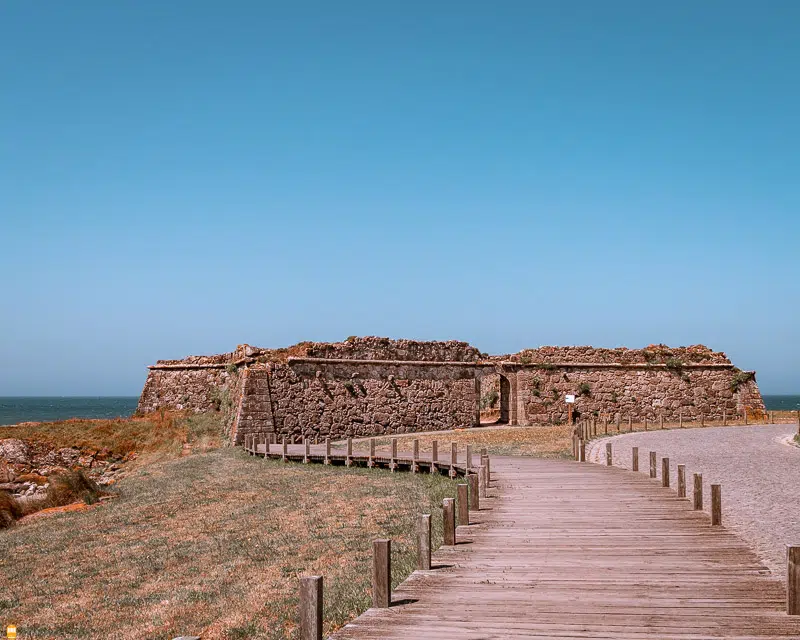
Information: when I wrote this article, the path wasn’t finished yet.
14. Carreço
Moinhos de Montedor
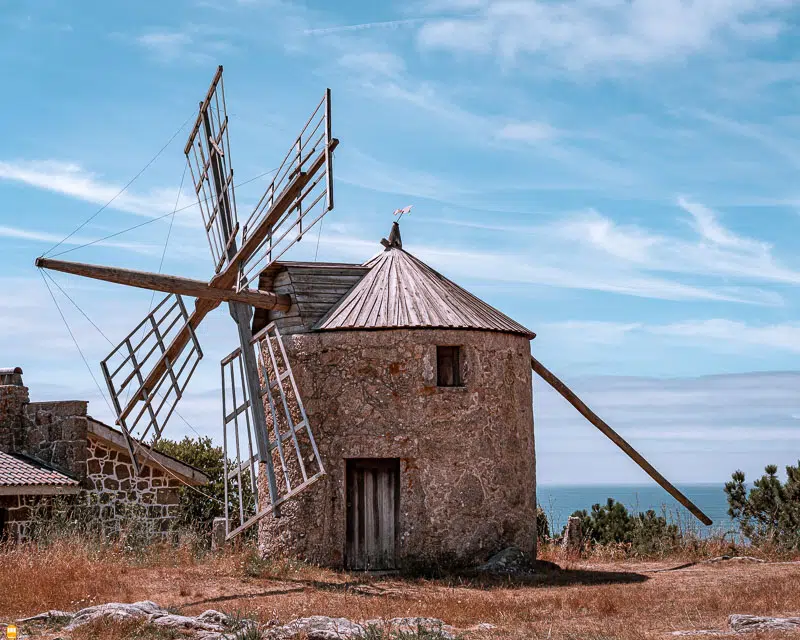
Built in the 19th century, Montedor Windmills are windmills made with wooden trapezoidal sails, very common in Northern Portugal. There, you’ll have access to information about the windmills and the region as well as the environmental and patrimonial routes that are present in the natural areas of this parish.
The group Grupo Folclórico Cultural Danças e Cantares de Carreço is responsible for visits and, if you schedule ahead, you can have a wonderful experience trying local gastronomy, dance and music.
Farol de Montedor
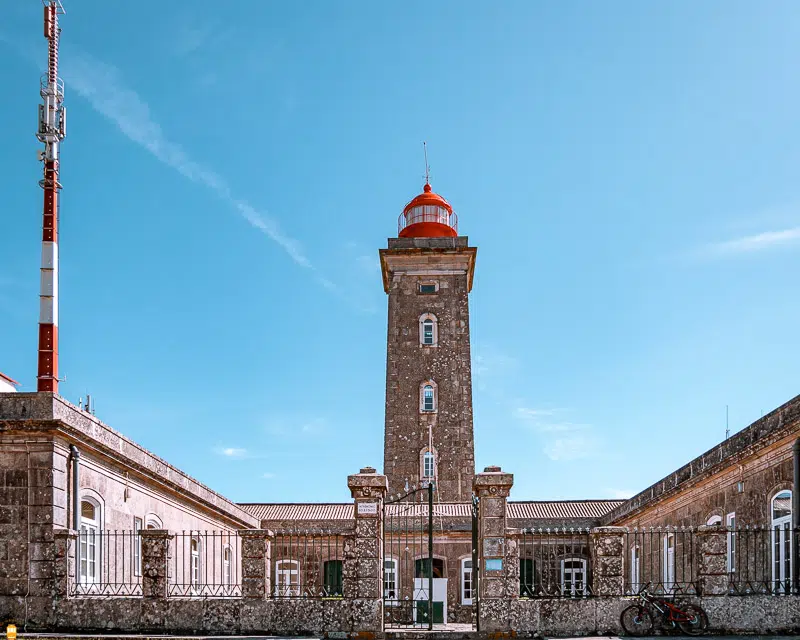

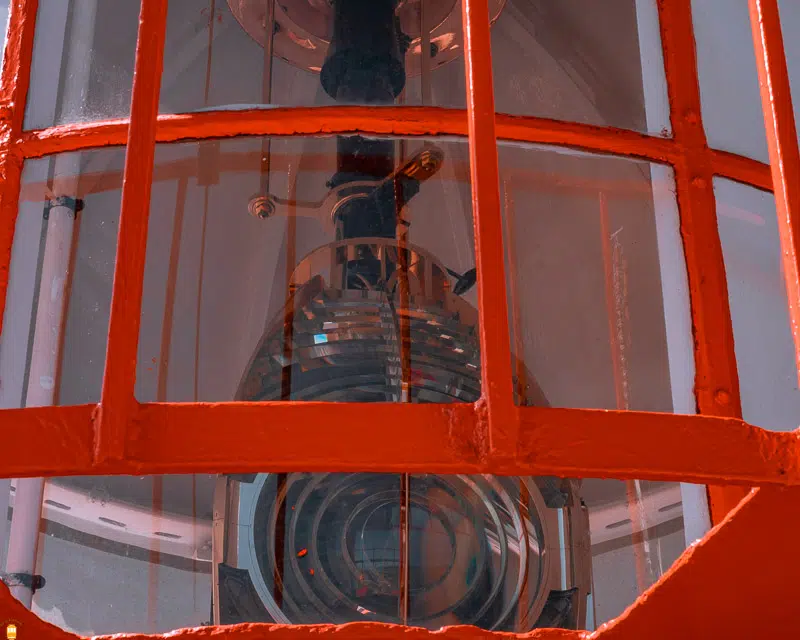
Built in 1910, this civil-architecture lighthouse is laid out in U and its entrance is facing North with the tower in the centre. The lighthouse tower has a two-floor cylindrical dome and an optical illumination system with crystal-directional rotation.
Information: if you visit Viana do Castelo on a Wednesday, take the opportunity to go on a free guided tour to the lighthouse (from 14h to 17h). I loved discovering the history of this place, how the lighthouse works and what the lighthouse keeper does here as well as climbing the spiral staircase to the top of this building. The 360º view is amazing!
Praia do Carreço

Carreço beach is well-known among families because it is protected from northern winds thanks to the geography of this location. Here, you’ll find several geological formations and you’ll have the opportunity to admire some bird species like the cormorants.
15. Afife
Praia de Afife
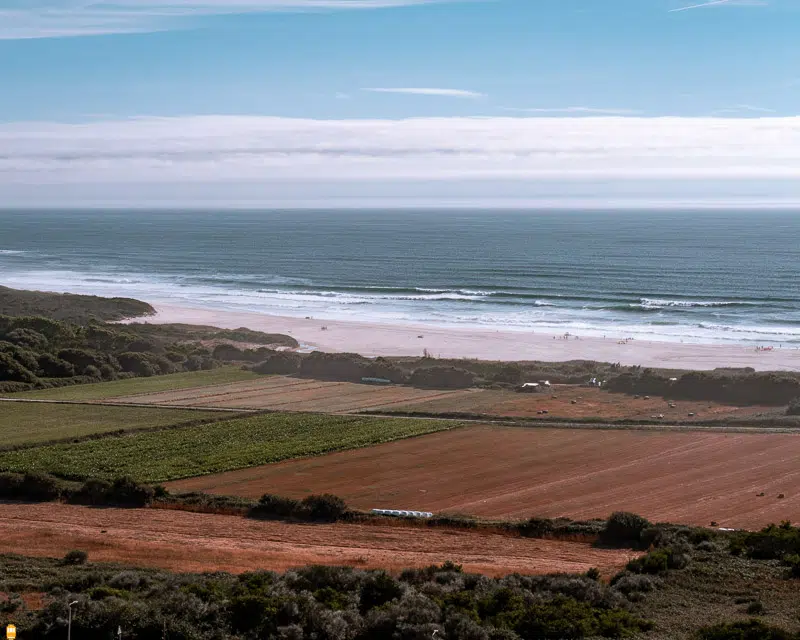
Afife beach has a unique seascape where the blue water, fine sand and beautiful dunes come together. When walking along the beach you can admire the dunes and all the fauna and flora diversity. Afife river, dominated by a set of granite rocks, flows into the beach forming a small lagoon close to the river mouth.
Capela Santo António
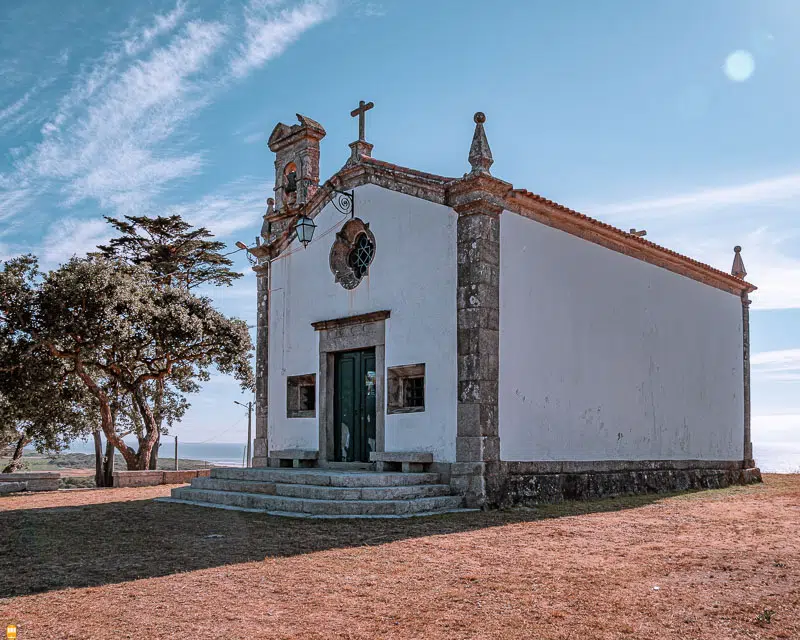
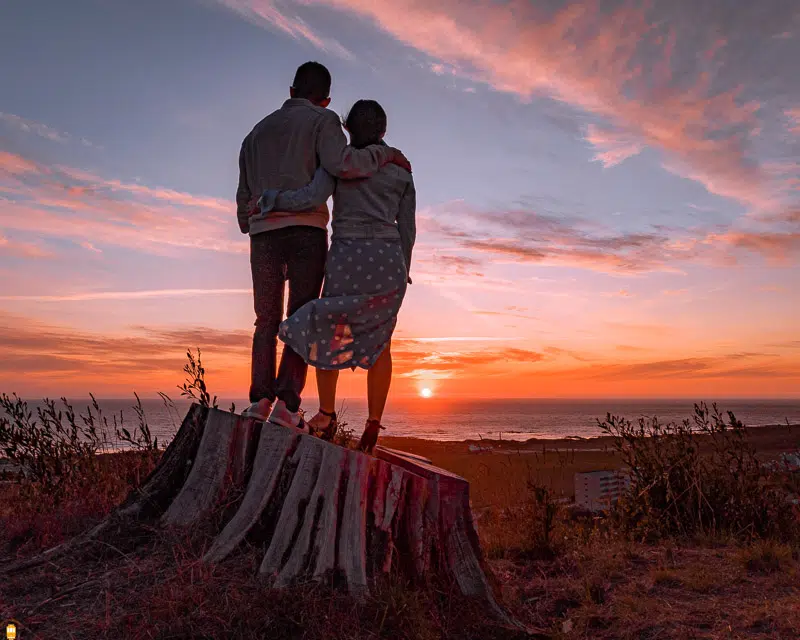
In Afife you can also take the opportunity to go to the chapel Capela de Santo António. Apart from the small chapel, you should know that this place is also a viewpoint where you can enjoy the amazing views over the surrounding area.
I had the opportunity to enjoy the sunset from this viewpoint and it was an unforgettable moment!
Please check the itinerary from Afife beach to the chapel Capela de Santo António. The itinerary the GPS or Google Maps suggest will take you to a dead-end road!
16. Cascata do Pincho

Located in the village of Montaria, 20 km away from Viana do Castelo, Pincho waterfall is one of the most beautiful waterfalls you can discover in Northern Portugal.
If you have time, enjoy the silence and go for a swim in the crystal clear waters of this place.
Information: there are three paths to get to this waterfall (one rocky path and two dirt paths). Here is the itinerary for the rocky path. If you make a wrong turn and enter a dirt path, then I suggest you park your car and go the rest of the way on foot.
17. Santuário da Nossa Senhora do Minho
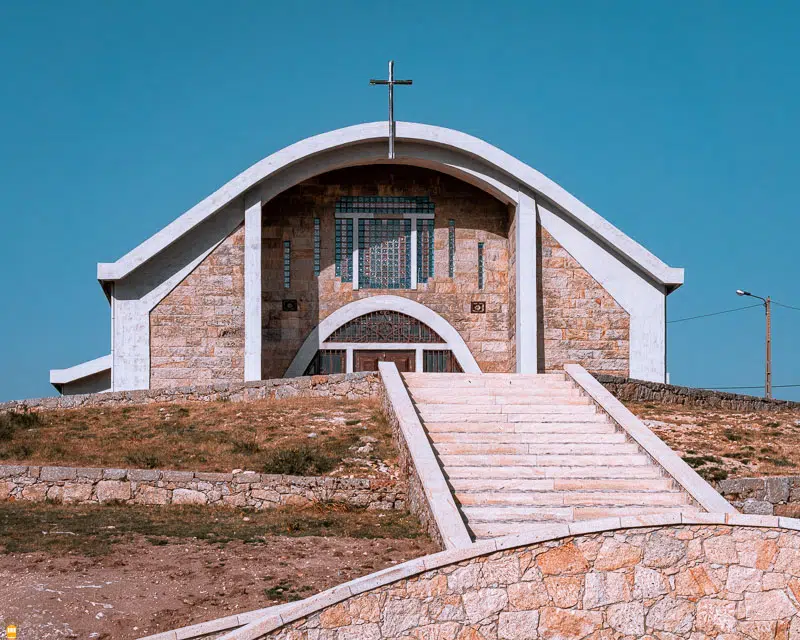

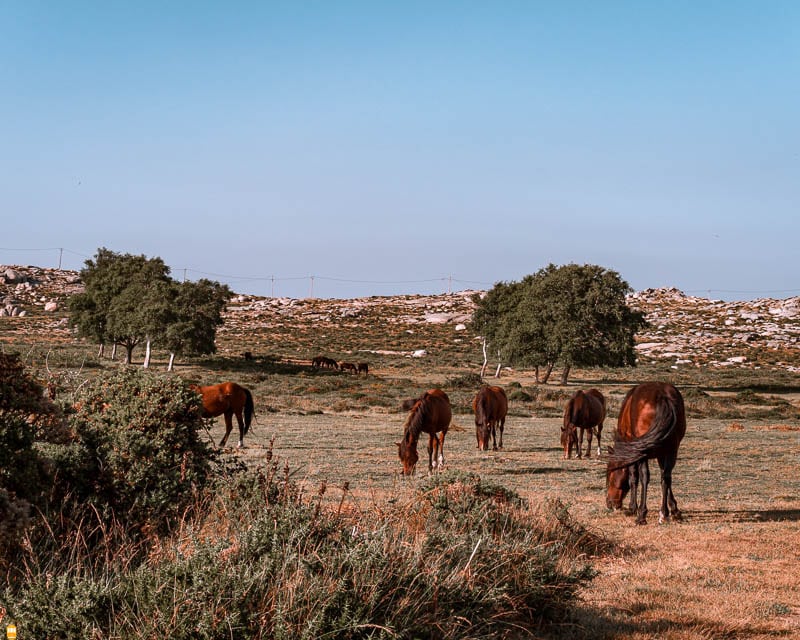
The Sanctuary of Senhora do Minho is located up in Serra d’Arga, where the famous pilgrimage take place. From here, you’ll be able to enjoy the amazing views that stretch for kilometres in every direction.
Apart from the beautiful views, you can also admire wild horses and cows grazing and have a picnic using the tables already on-site.
Information: the road is narrow so it’s better to visit this place only when there’s good weather.
After leaving the sanctuary, don’t miss the opportunity to make a stop at the restaurant Caçana to savour the Portuguese tapas and enjoy a wonderful view that reaches the sea (the sunset is just amazing).
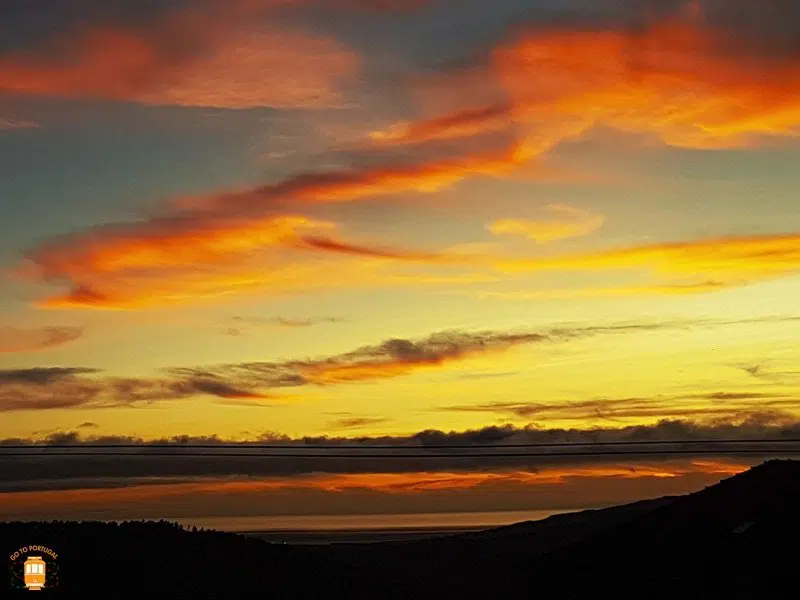
18. Capela de São Silvestre
This chapel offers a magnificent view over Lima river and Viana do Castelo.
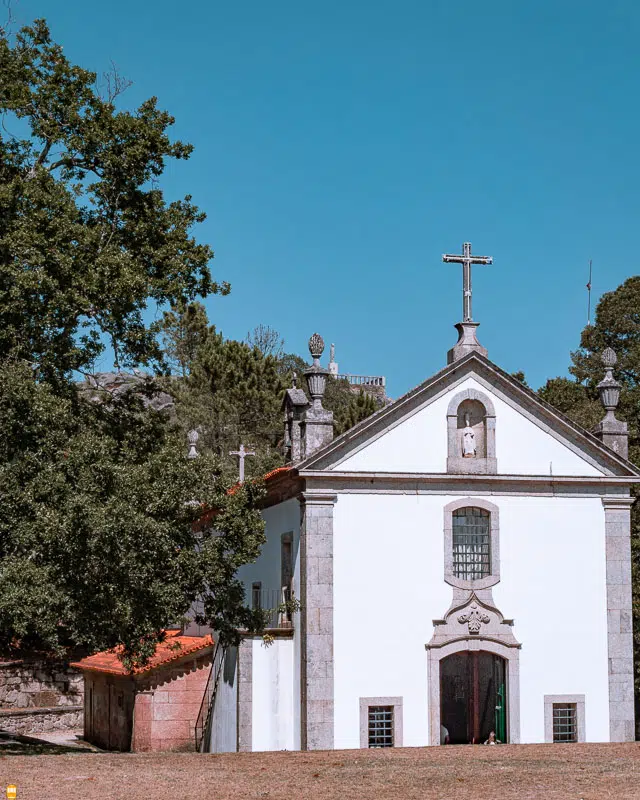
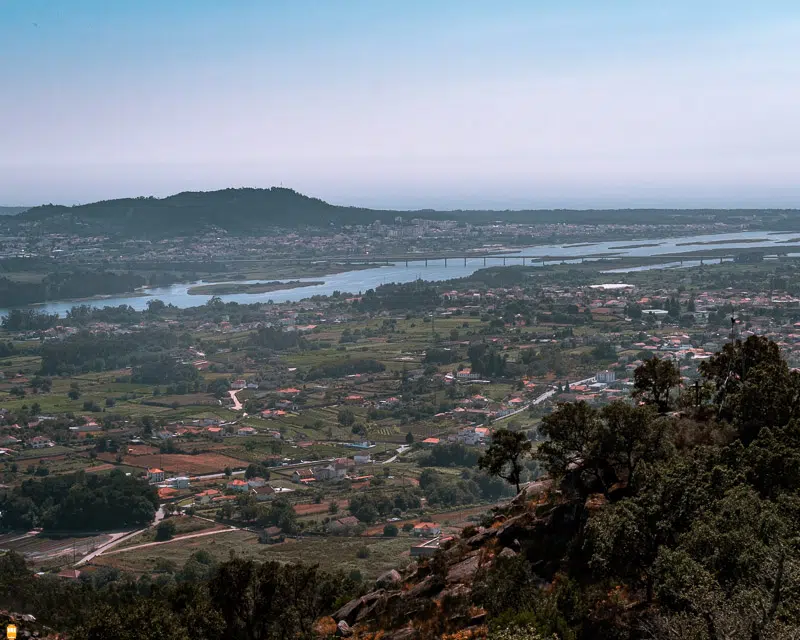
Apart from the tables you can use for a picnic or relax, this place has what it needs to protect more than 100 people from wind and rain in case of bad weather.
Information: at this place, climb up the stairs behind the chapel to access the viewpoint and admire the amazing view!
19. Praia do Cabedelo
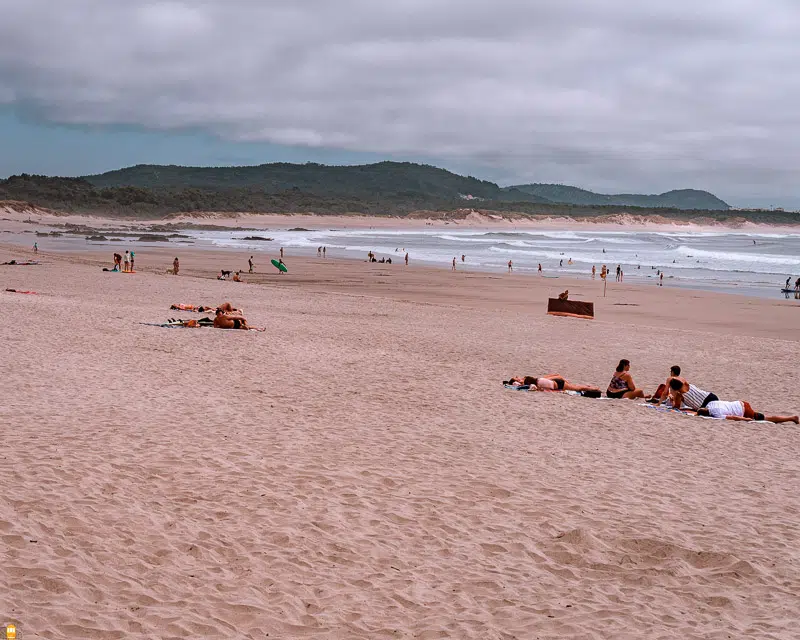
This beach is the first south of Lima river and is divided in two areas. The first one is a beach north of the pier with strong winds, perfect for windsurf and other nautical sports and where several international competitions take place. South of the pier, there is a second beach with long dunes and clear waters.
Information: about 7 km south of this beach, you can visit Amorosa beach, a fine-sand beach with dunes and many rocks. At this beach, you’ll have the opportunity to admire a rich fauna and flora like algae, mussels, shrimps, crabs, starfish and several small fish.
20 – Miradouro da Nossa Senhora dos Emigrantes (Castelo do Neiva)



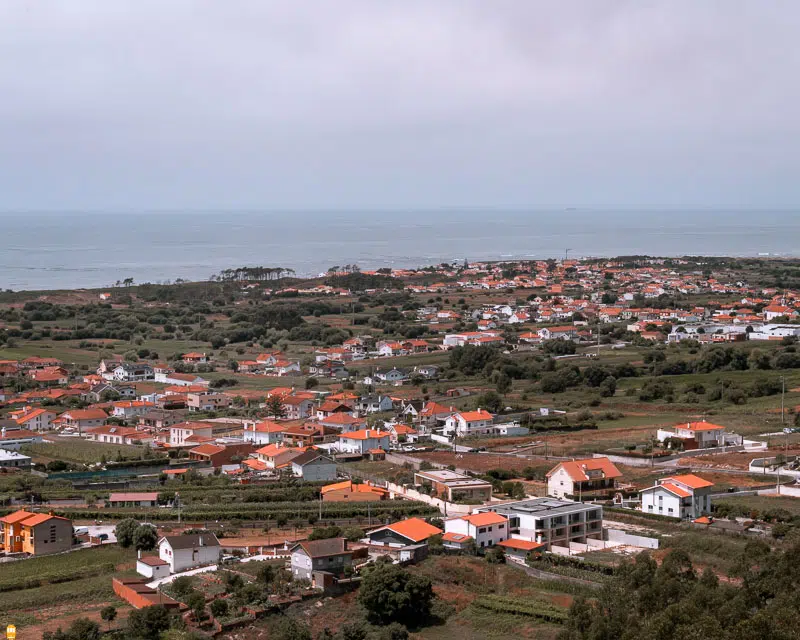
The viewpoint and small chapel of Nossa Senhora dos Emigrantes are on top of a hill and from there one can enjoy the wonderful view over the Atlantic Ocean and Neiva river. The road to get there is steep but it’s worth it if you want to relax for a while.
- Location: https://goo.gl/maps/G8pGNySVR3SbSchx7
Itinerary to visit the 20 most beautiful places in Viana do Castelo
Historic centre
If you’re counting on driving to Viana do Castelo, then I suggest you park your car at the Estação Viana Shopping pay-parking lot since it is the best place to start following the itinerary below.
As an alternative, you can also park your car at the free-parking lot close to the ship Gil Eannes.
To visit Santa Luzia Sanctuary, you can take the funicular (elevator) that will take you to the temple, climb the long stairway or you can drive there instead (free parking).
If you choose to take the funicular (before or after visiting the historic centre), know that you can climb the stairs to the right of the train station and then turn right to get to the funicular of Santa Luzia.
If you’re going to take the train to Viana do Castelo, you should know that there is a direct connection to Porto city; if you’re staying in other locations like Braga or Guimarães, then you’ll need to transfer from one train to another in one or two train stations.
The other way for you to get to Viana do Castelo is on a coach trip. The bus station is also in the historic centre, close to the train station.
To visit the historic centre, I suggest you follow 1 to 10 as they are presented in this article.
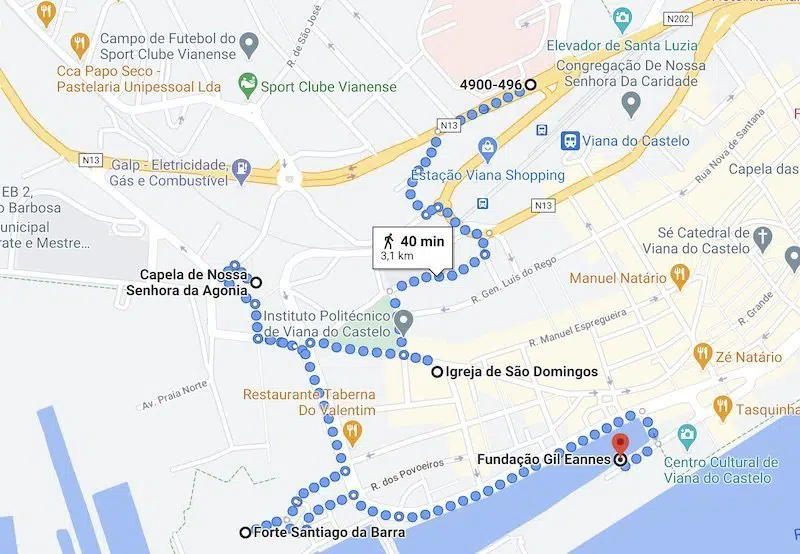

Information: in the above map, Google Maps doesn’t recognise the stairs that will allow you to cross the railway line. To use the funicular, follow the above-mentioned tip.
As an alternative to discovering the historic centre on foot, you can take the electric mini-buses that will take you to the main points of interest in the city. To discover the routes, please click here.
If you don’t want to hire a car or waste time on public transportation, and if you’re staying in Porto, consider booking a guided tour to Alto Minho . Considered one of the most authentic regions of Portugal, here you will have the opportunity to start by discovering the beautiful city of Viana do Castelo.
There, take a walking tour to get to know the historic centre and admire the beautiful buildings as well as the medieval streets. The visit to this city will end with a stop at the sanctuary Santuário de Santa Luzia from where you can enjoy the magnificent views over the city and the Atlantic Ocean.
Next, this experience will take you to what is known as the oldest town in Portugal: Ponte de Lima. After lunch, get to know the unique atmosphere of this town and be sure to cross the landmark that gave the name to this place, the beautiful Roman and medieval bridge.
To end your tour to Alto Minho, you will also follow the Lima river through the mountains of the Peneda-Gerês National Park where you will have a last stop at a village where you will savour the tasty Verde wine.
Viana do Castelo surroundings
To explore the surroundings of Viana do Castelo, my suggestion is that you use a car as your means of transportation since it’ll give you more freedom and time to visit each place.
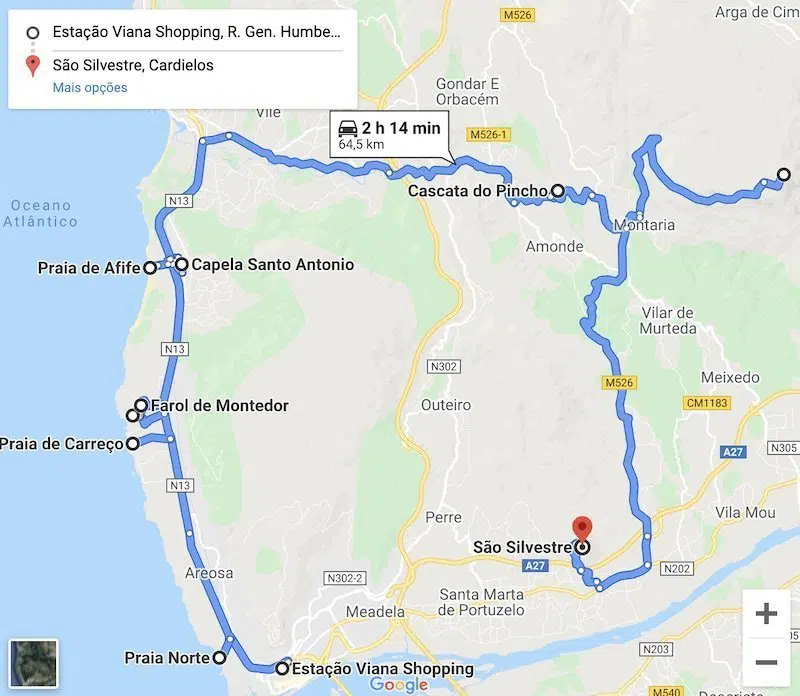
Important information: to visit the chapel Capela de Santo António, in Afife, and Pincho waterfall, follow my tips given in nº 15 and nº 16.

Where yo sleep in Viana do Castelo
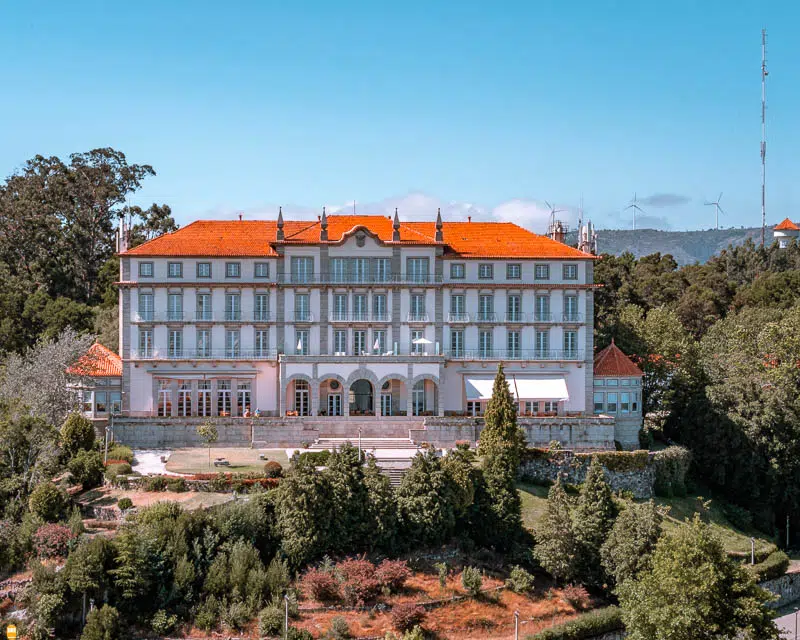
Pousada de Viana do Castelo is one of the best options for those who want to spend the night in the city. In fact, this amazing 4-star hotel is on the top of Monte de Santa Luzia, offering a privileged view over the beautiful sanctuary, the city, Lima river and the Atlantic Ocean.
At this amazing accommodation, you’ll have the opportunity to spend the night in one of the beautifully decorated rooms, with air-conditioning, a mini-bar and cable television. You can also go for a swim in the exterior pool or play at the tennis court.
By staying at this hotel, you won’t need to drive to the historic centre of Viana do Castelo nor worry about parking your car since the funicular is just a few metres away.
Located just a few metres away from the historic centre, Hotel do Parque is a modern 3-star hotel with amenities that guarantee a wonderful stay for those who want to spend some nights in this region.
Enjoy your stay in the comfortable rooms, make some exercise at the fitness centre, go for a swim in the big swimming pool and know that there is also a pool for kids. This is, definitely, one of the best hotels for families!
Another of the hotels people prefer when visiting Viana do Castelo, Hotel Laranjeira is right in the historic centre of the city and a few metres away from points of interest like the Cathedral, the square Praça da República and Távora Palace.
Despite being a 2-star hotel, the Hotel Laranjeira offers amenities that many other places would like to have, including a bike rental service, a room service and a bar.
Where to eat in Viana do Castelo
Traditions and Festivities in Viana do Castelo
Romaria de Nossa Senhora da Agonia
Probably the biggest pilgrimage in Portugal, the festivities in honour of Nossa Senhora da Agonia date back to the 18th century, a time in which the devotion to this saint began at the chapel Capela do Bom Jesus, present Capela de Nossa Senhora da Agonia.
With a duration of four or five days and with a rich an varied programme, this festivity takes place during August attracting thousands of visitors who are in the country on holidays.
Among other highlights, there is one you can’t miss – the Desfile da Mordomia. This is the true highlight of this festivity and the one that brings more fame to the event since it gathers 400 women that show off typical garments and several gold pieces (necklaces, earrings, rings) and parade through the streets of the city.
Don’t miss the opportunity to admire the magnificent fireworks display that light up the sky of the city on Saturday to Sunday nights, the Cortejo Histórico-Etnográfico (an Ethnographic-Historic Procession), folklore perfomances and much more!
Feira Medieval de Viana do Castelo
With its origins in 2007, Viana do Castelo Medieval Fair is gaining relevance at a national level and is another event that attracts thousands of visitors to the city during June. At this fair, you’ll find the typical artisans, merchants and other interesting activities that take visitors back to the Middle Ages.
Festival de Folclore Internacional Alto Minho
Considered one of the biggest folklore festivals in Europe, this festival appeared in the last decade of the 20th century. Its main objective is to promote this type of popular culture through the performances of several folklore groups that come from Portugal and other guest countries. An event to follow during July!
As you can see, there are more than enough reasons to discover Viana do Castelo. Whether it’s monuments, churches, museums, beaches or festivities, don’t miss the opportunity to visit this city during your stay in Northern Portugal.
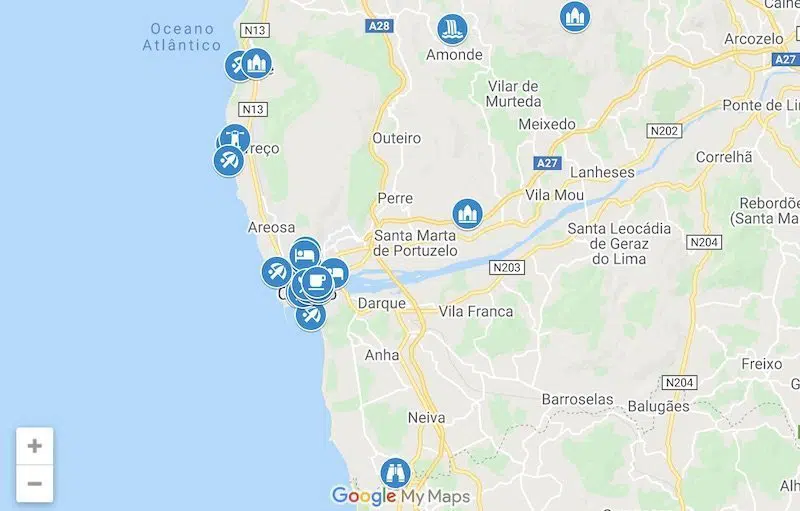
Are you going to visit Viana do Castelo? Then don’t hesitate to book your hotel room, your car or the best activities by clicking the links below. This way you are helping me in the development of my blog and I’ll be able to offer you free tips and travel guides so that you can better prepare your visit to Portugal. Thank you!
What will also interest you:
- 7-Day travel guide to visit Porto and Minho (Guimarães, Braga, Ponte de Lima, Viana do Castelo)
- Top 10 of the places to visit in Northern Portugal
- Top of the places to visit in Ponte de Lima
- Top 20 things to do in Braga
- Things to do in Guimarães, the birthplace of Portugal
- Top of the places to visit in Peneda-Gerês National Park
